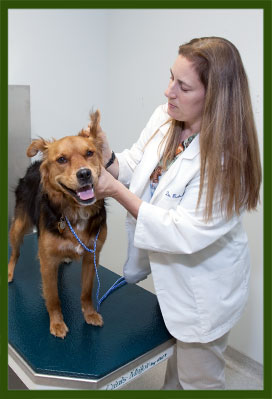Dermatological Disorders
 Skin disorders are one of the most common reasons pets visit their veterinarians. Problems can develop wherever there is skin, including the ears, around the lips, the bottom of paws, and around the anus. Whatever the symptoms, problems with your pet’s skin are hard to ignore. Although the causes are varied, most skin problems make themselves known with one or more of the following signs: itchiness (scratching, licking, chewing, rubbing, scooting-dragging the bottom across the floor, shaking the head), sores, rashes, hair loss or a thinning coat, bumps, seeing fleas or ticks, or noticing a bad smell, even after bathing.
Skin disorders are one of the most common reasons pets visit their veterinarians. Problems can develop wherever there is skin, including the ears, around the lips, the bottom of paws, and around the anus. Whatever the symptoms, problems with your pet’s skin are hard to ignore. Although the causes are varied, most skin problems make themselves known with one or more of the following signs: itchiness (scratching, licking, chewing, rubbing, scooting-dragging the bottom across the floor, shaking the head), sores, rashes, hair loss or a thinning coat, bumps, seeing fleas or ticks, or noticing a bad smell, even after bathing.


